Mozambique isn’t usually the first place people think of when planning an overland trip through Africa… but I reckon should be on the list, at least! If you’re dreaming of an adventurous road trip off well maintained tarred roads, overlanding through Mozambique might just be the place for you. We were so pleasantly surprised by the country. With beaches (ehem Bazaruto), diving, raw national parks and welcoming locals. We recently spent a couple of weeks overlanding through Southern and Central Mozambique.
This Mozambique travel guide is packed with insights, tips, and must-see destinations to enrich your journey as much as possible.
We entered Mozambique from Eswatini via the Namaacha border, spent two+ weeks exploring and exited at Zobue into Malawi. We knew very little going in, and came out with dusty tires, unforgettable memories, and a newfound love for this wild and wonderful country. So… buckle up and get ready to explore a country that promises both challenge and wonder. Mozambique reallllly needs to be on your list!

This article includes some affiliate links. What this means is that if you decide to purchase through my link, I will get a small commission. It won’t come at any extra cost to you but it’ll be like buying me a cup of coffee as a little thank you.
Quick Facts: Mozambique Overlanding at a Glance
Entry Border: Namaacha (from Eswatini)
Exit Border: Zobue (to Malawi)
Duration: 16 days
Best season for travel: April – October (dry season)
Road Conditions: Paved and dirt roads. Sandy roads for some locations. Some poorly maintained roads.
Visa Requirements: VoA for many nationals, eVISA pre-approval required
Fuel Availability: Decent in the south but should fill up when you’re at 1/2 tank and see a station
Internet & SIM Card: Vodacom – good coverage. We used this one from Airalo eSIM.
Currency: Mozambican Metical (MZN)
Language: Portuguese (English in main touristy spots)
Mozambique Border Crossings for Overlanders
We entered at Namaacha (Eswatini–Mozambique border). Processing was relatively straightforward, though slow. Before border crossing, we spoke to a South African overlanding guide and we were on edge about the border crossing. He explained how much he hated the crossing we were about to use and we should reconsider the crossing (yikes)! Maybe the border guards were having a good day, but we had a really straightforward and easy experience. Here’s what you need to ensure yourself a stress-free border crossing.
Pro tip: Have printed copies of everything and keep them in a neat folder. It will make border crossing easier and the police checkpoints may request these. Let’s say – they LOVE printed documents over digital ones.
Car “Essentials/Rule of Thumb”:
-
- Fire Extinguisher + 2 Yellow Vests + Safety Triangle – a necessity. They aren’t expensive to get and will save you a world of headache at police checks 😉
- If towing, a yellow triangle with blue background sticker should be on your car.
- Don’t drive barefoot
- Don’t drive with sunnies on
- Turn off the radio when you’re coming to the police checkpoints
- KEEP A POSITIVE AND FRIENDLY ATTITUDE at the checkpoints 😉
- We put away any valuables from view while driving
- Have a bonus fees wallet. I put small notes in so if I need to pay a “fee”, they can see that I haven’t got much. 😉
Mozambique eVisa and Entry Requirements
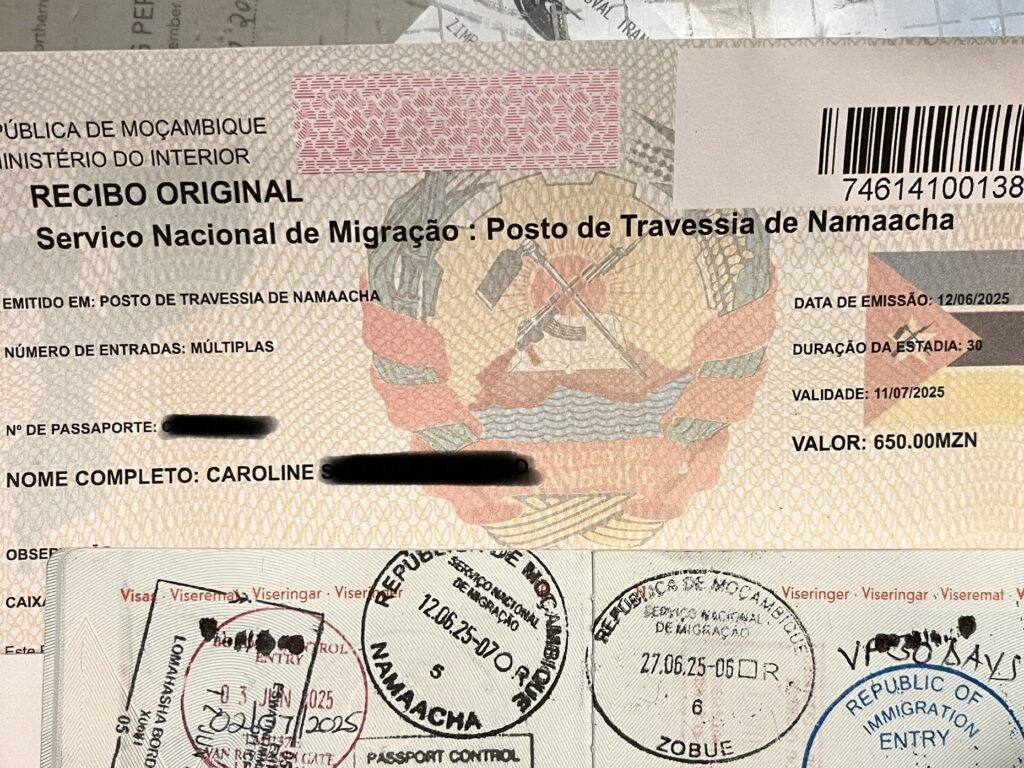
-
- Financial statement showing financial means
- A letter from your accommodation showing proof of stay
- Passport photo
- Photocopy of Biometric passport page
- Return ticket (if via flight), N/A for overlanders
Border Checklist:
-
- Valid Passport (6+ months validity)
- Visa on Arrival, can be paid cash or card. 650 MZN
- eVISA pre-approval. Recommended for majority nationalities. Check with your nearest consulate. Here’s a list of citizens that will need to apply at the embassy.
- Vehicle Ownership Documents or authorization letter from rental agency (and vehicle owner passport copy)
- Third-Party Insurance. This is mandatory. We bought ours from Hollards for 230 ZAR for a month.
- Road Tax – approx. 100–200 MZN, paid in cash. Although we couldn’t find the posting so didn’t end up paying.
- International Driving Permit (IDP). Never asked for it but always good to have
- Yellow Fever Certificate – may be asked for if arriving from endemic regions
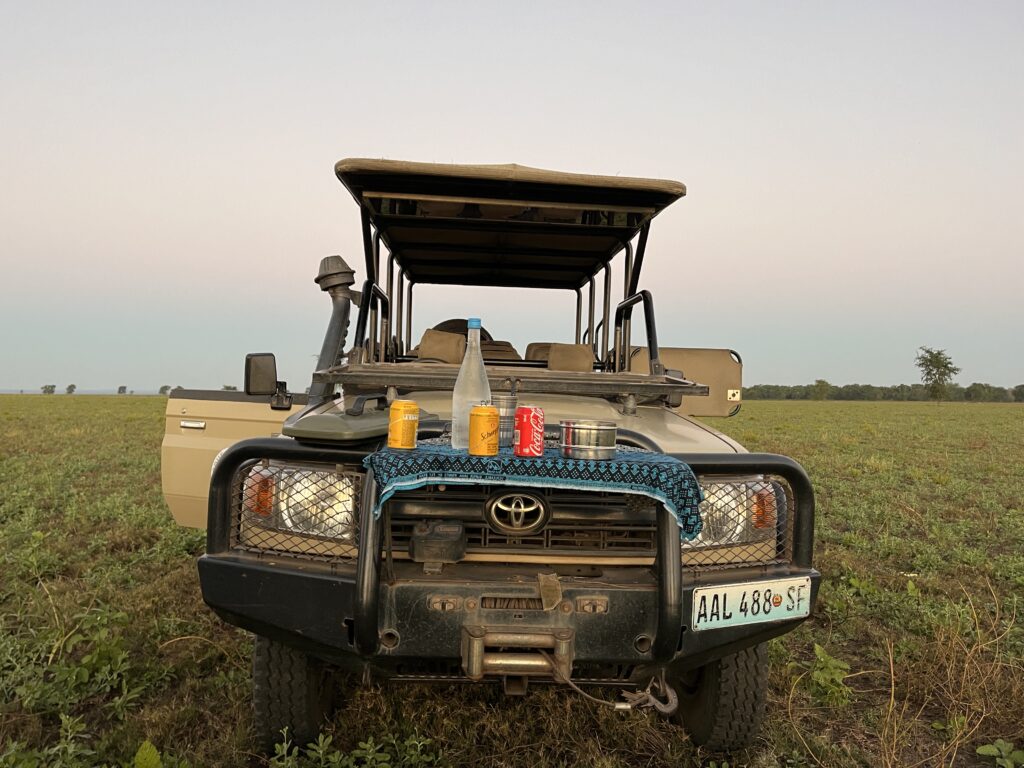
Exiting to Malawi via Zobue
We were heading up to Malawi next so we decided on the Zobue Border cross. Here’s a kicker: a few km’s south of Tete, there is a police stop – it’s not an ordinary one. Here, you will need to pay for a Road Tax. For some reason, it’s only applicable when driving the Tete region and beyond. It’s not much, USD $10. It is a bit unassuming and we accidentally drove through it. This would prove a problem at the border.
You supposedly get a slip when you’ve paid this road tax and you will need to present it when you leave the border gates on the Mozambique side. We unfortunately didn’t have this BUT we managed to explain our way out of it and avoided a fine. I don’t recommend this. Just don’t accidentally drive through this police check point south of Tete!
This is quite a busy border posting. On the Mozambique side, there are so many runners and “look outs” there. Your car is surrounded. We managed to park up somewhere close enough to the immigration desk to keep an eye on it. Don’t forget to submit your car import papers to the Customs Desk.
The Malawi border control is a few kilometers away so you’re almost driving through no-man’s land for a while!

Is Mozambique Safe for Overlanding?
This is one of the top questions we had before entering: Is it safe to self-drive Mozambique?
Short answer: yes. Long answer: It’s fine but just don’t be an idiot about it.
Mozambique has had a complex past and occasional travel warnings. These warnings have mainly been tied to the northern regions. But in the southern and central regions (the routes we took) were safe to travel. We never felt in danger. Road conditions weren’t the best through some parts but it was well maintained along the N1 Highway until Vilankulos. The lack of street lights (and in some instances – car lights) makes night driving difficult. Sure, police checkpoints can make it mentally exhausting but were okay most of the time.
You need to be alert, prepared and take it easy. Highly advisable to keep all driving from dawn to dusk.
Cash or Card?
Mozambique uses the Mozambican Metical (MZN). While some places accept credit cards, cash remains king. It’s wise to carry enough cash since ATMs aren’t always reliable, particularly outside major cities.
If you are planning to buy more from the mercados/corner stores, you’re better off carrying cash as most of these places won’t have a card machine.
VISA cards are better than MasterCards. What we were finding out during our travels was that VISA cards were more widely accepted than Mastercard. So before you purchase fuel or even stay somewhere, check if they can accept your card. Majority of the smaller, locally owned places took VISA. Mastercard was mostly accepted at supermarkets or more upscaled eateries.
Mozambique Road Conditions: What Overlanders Need to Know
Roads in Mozambique vary from paved highways to sandy tracks, heavily potholed roads and non existent roads. Though, I would say, as long as you plan your route according to the conditions and you don’t rush, you will be fine. This isn’t a place you want to rush. Fuel availability is generally good in the south, but it’s wise to top up whenever your tank is half full, especially before long stretches without services.

What to Expect:
- The main highway – N1 is maintained until Vilankulos (with the occasional pothole)
- Along N1 – north of Vilankulos to Inchope, the road is in really rough shape. We split the journey over two days.
- Sand roads in coastal areas like Tofo, Vilankulos, Bilene, Inhasarro.
- Long distances between fuel stations (mainly north of Vilankulos)
- Occasional traffic police stops… some official, some questionable (we were stopped 15 times during our time there)
Mozambique Road Trip Itinerary: 16 Days Overland
Here’s how we structured our route, complete with major stops, driving times, and highlights.
- Day 1: Enter via Namaacha → overnight in Praia de Bilene
- Day 2: Praia de Bilene → Tofo Beach (Inhambane)
- Day 3 – 5: Tofo
- Day 6: Tofo → Vilankulos
- Day 7 – 8: Vilankulos (& Bazaruto Archipelago)
- Day 9: Vilankulos → Inhassaro
- Day 10: Inhassaro
- Day 11: Inhassaro → Mango Farm
- Day 12: Mango Farm → Gorongosa National Park
- Day 13: Gorongosa National Park
- Day 14: Gorongosa → Tete
- Day 15: Tete (optional – we had a mechanical issue so stayed over)
- Day 16: Tete → Exit via Zobue to Malawi
Destination Highlights Along the Route

Other Places to Visit in Mozambique
It is such a massive country and due to the current situation, we had to give some places a miss… but I would love to revisit just so we can try see some of these beautiful places! We would have loved to explore the northern regions, mainly:
- Ilha de Moçambique: UNESCO island with crumbling colonial architecture
- Quirimbas Archipelago: remote beaches, coral reefs, local island life
- Pemba: gateway to the north
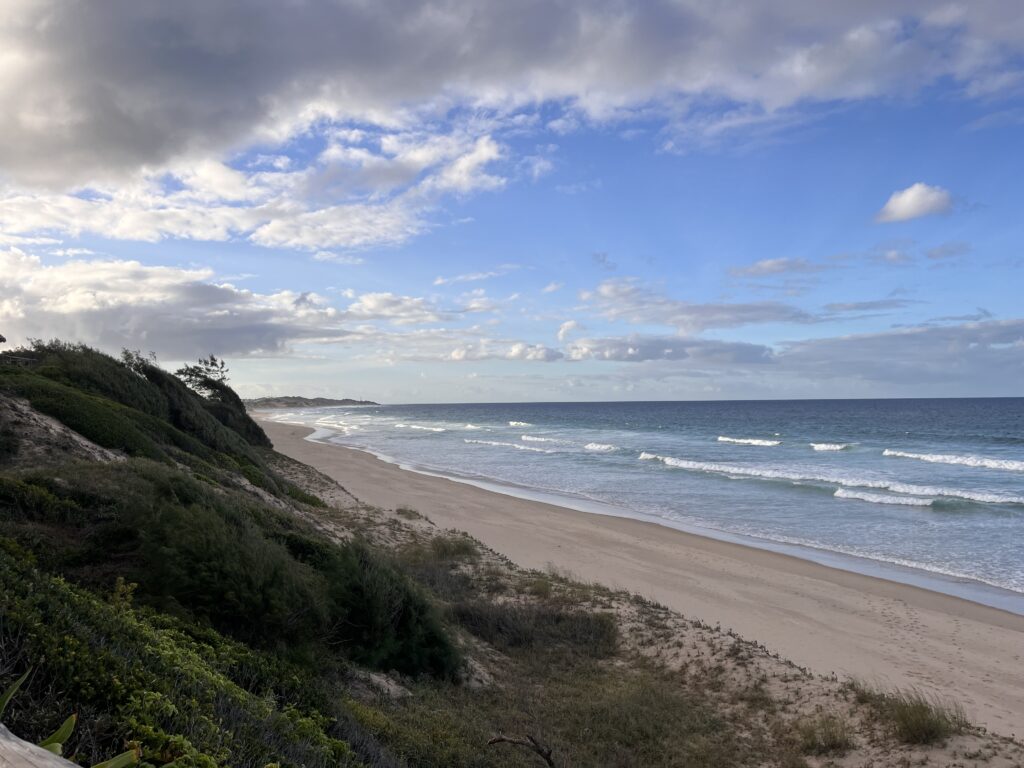
There is also Inhambane and Pambara Lagoon. We mainly spent time in Tofo as I wanted to scuba dive but I think if you’ve got a couple of days, it would be worth visiting the lagoon.
Zivane National Park is another place that made it onto our list. While staying at KiteSurf Tofo, the owners told us about a beautiful but hidden national park, inland of the country. Unfortunately while we were in Mozambique, the entire park was closed for maintenance. We heard it’s like a small Gorongosa with lots of rewilding and species reintroductory. Next time!
Chimanimani Mountains on the western highlands of the country, towards Zimbabwe. I think if we didn’t go up to Malawi, we would’ve cut through West and visited this region but once again, saving it for next time.
Ponta de Ouro straddles right across the South African border. It was a bit of a trek from Eswatini (at least the crossing we had planned) so we didn’t go there. A traveller I met saw dolphins on a snorkel trip there!
Why Mozambique Belongs on Your Overland Map
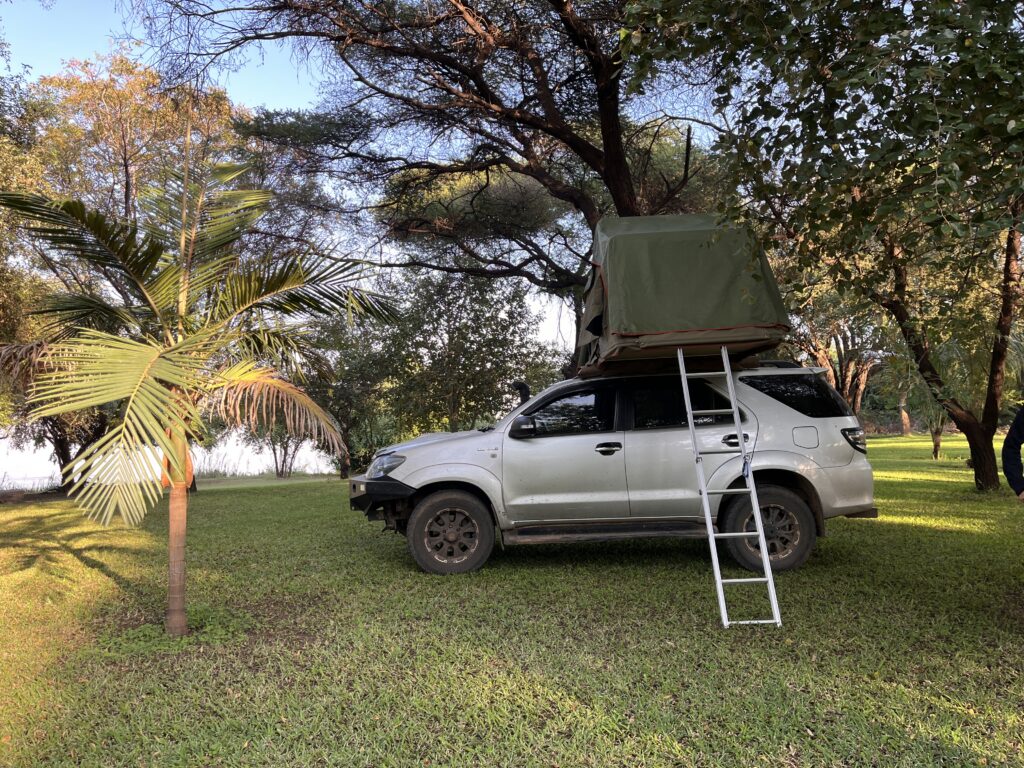
Mozambique surprised us. It was honestly just a beautiful place. We knew that travel there would be tricky (ehem police checkpoints) but if you have a sense of adventure and don’t take things too seriously, it makes for a fun destination. There are FB groups you can join to get some up to date information or reach out to the local business owners – Sascha, KiteSurf Tofo owner was a wealth of information!
It’s raw, wild, and full of unexpected beauty. It’s also not the easiest to travel, which makes the rewards that much sweeter. The beaches will leave you breathless and while it is rough around the edges, you might find it an enjoyable place once you get to know it. Mozambique isn’t polished. It doesn’t have the infrastructure of Namibia or the popularity of Tanzania. But that’s its magic.
If you’re an overlander looking for the road less traveled, put Mozambique on your map. It’ll challenge you and reward you tenfold.
Planning Your Mozambique Overland Trip? Save This Guide!

If this post helped you plan your Mozambique road trip, consider:
- Sharing it with a fellow overlander
- Saving it to Pinterest or bookmarking it
- Following our journey on Instagram @TheTravellingSloth
Let’s wrap it up
FAQs: Overlanding Mozambique
Do I need a 4×4 to overland Mozambique?
Not necessarily for the southern route we took. A 2WD with decent clearance is enough if you stick to main roads. But a 4×4 gives flexibility for beach or park tracks.
Is fuel readily available?
Mostly in the south. The further north you go, the more important it is to top up early. Always fill up when you hit ½ tank.
Is Mozambique safe to travel by car?
Yes, with common sense. Stick to daylight driving, be aware of road conditions, and always greet police politely.
What is the best time to overland Mozambique?
Dry season: April to October. Roads are more accessible and the diving is said to be better.
What are some must have’s for the trip?
Toilet paper. Offline maps. Offline Portuegese translator. All your (car) documents printed. Pack adventure 😉
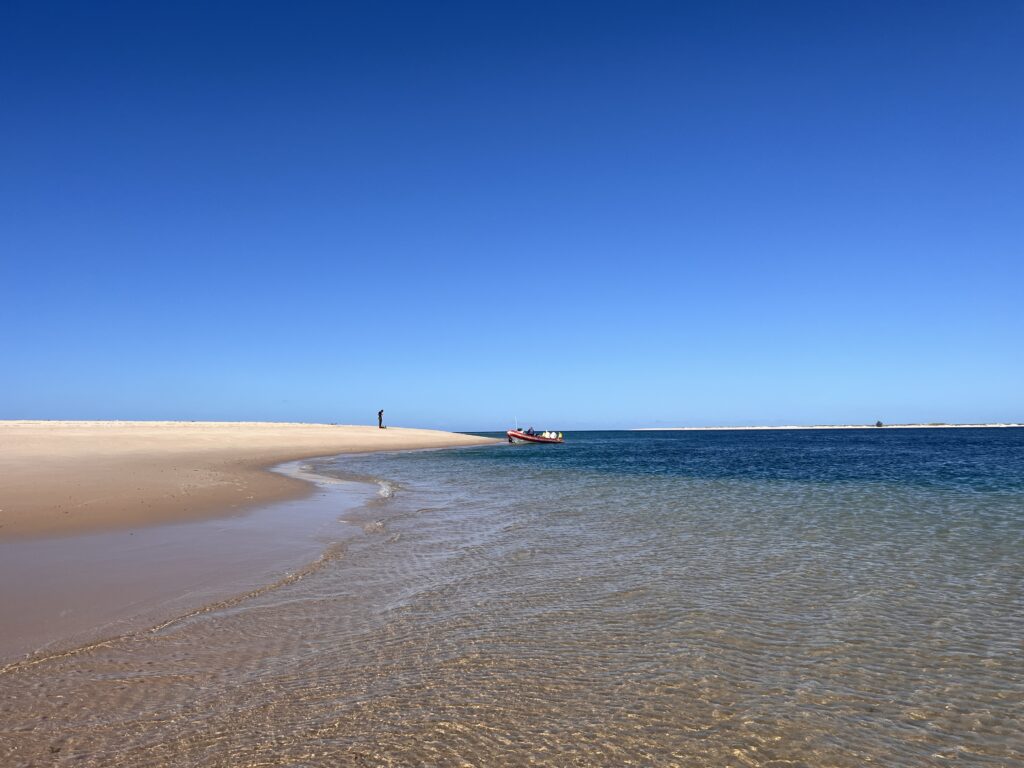
Can I overland Mozambique without a guide?
Abso-freaking-lutely! We did and we are by no means expert overlanders. If you keep your wits about you and follow the tips I mentioned previously – you’ll be right as rain. I think the main reason why not a lot of people do it is fear but that is something you’ll quickly overcome just by how beautiful the country is.
How much does it cost to overland Mozambique?
I don’t want to spoil it too much because I’m writing a whole post on it BUT we averaged £100 between the two of us per day while in Mozambique. Obviously you can do it for a lot cheaper but we did everything we wanted and didn’t skimp out on any luxuries. Although – you should note that this doesn’t include scuba diving as that is my personal expense 🙂
Do I need travel insurance for Mozambique?
Everyone should always have insurance. So that goes without saying. Although you’re gonna need to get a 3rd party insurance for the car (if you’re self driving a foreign car) and this is easily done online.

Travel Tips for Mozambique
- Drive during the day. Avoid potholes, unmarked roads, and stray animals. A lot of people walk on the road so without any street lights, it is difficult to see.
- Fuel up at half a tank. Remote stretches can go hours without a station
- Download offline maps. We used Maps.me and Google Maps offline
- Cash is king. Carry local currency; not all ATMs work with foreign cards (and mainly works with VISA card)
- Police stops are common. Stay polite, have all documents ready and avoid bribery (if possible)
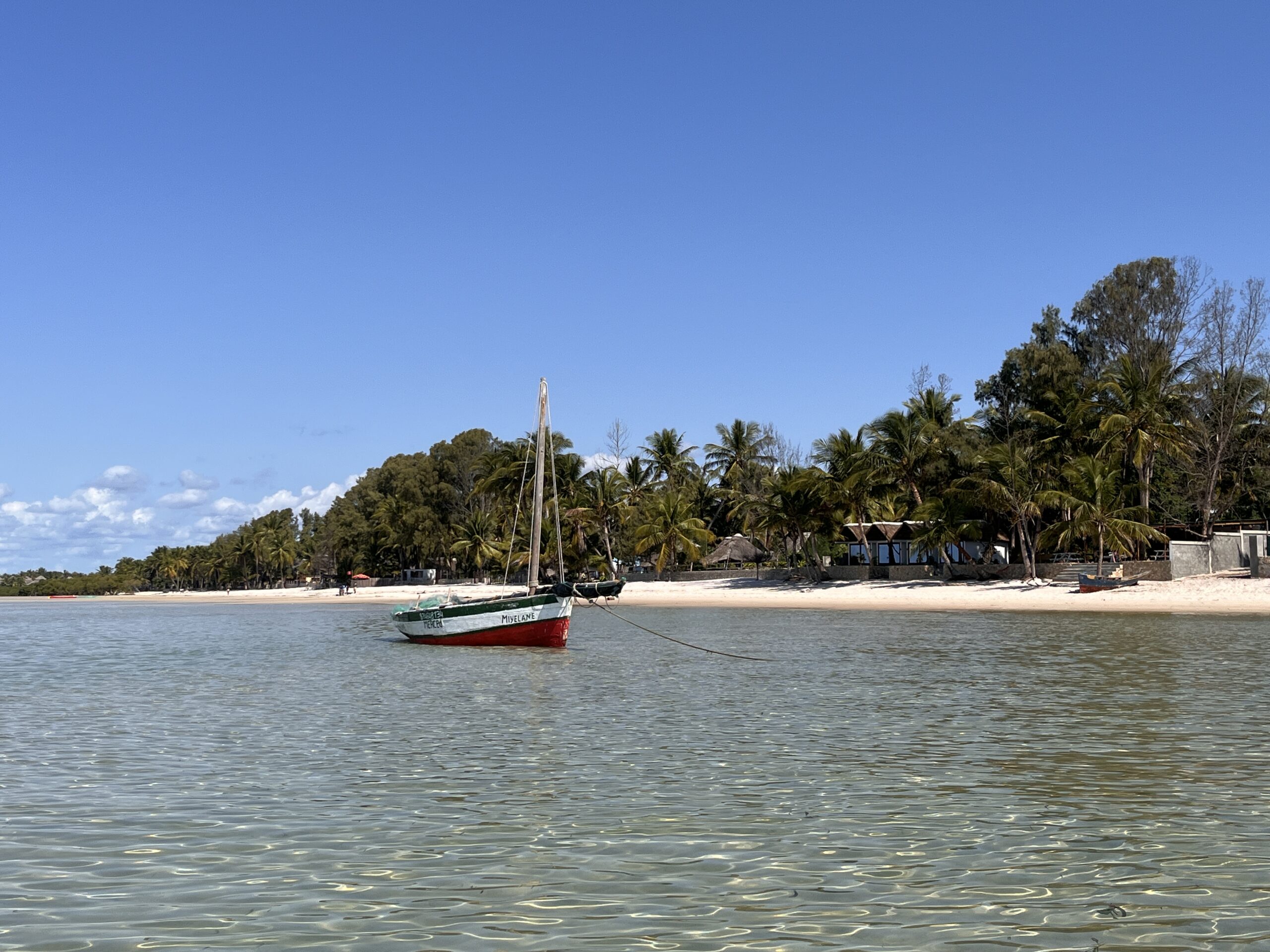
Leave a Reply